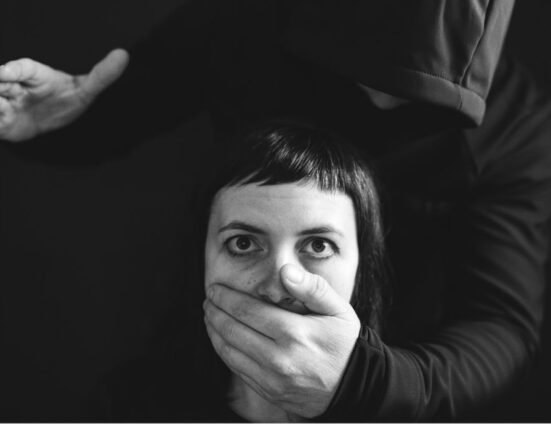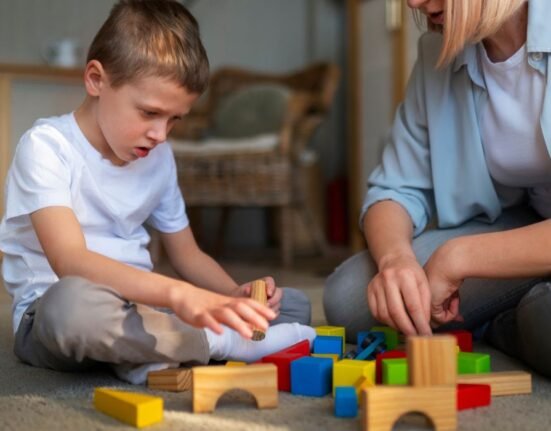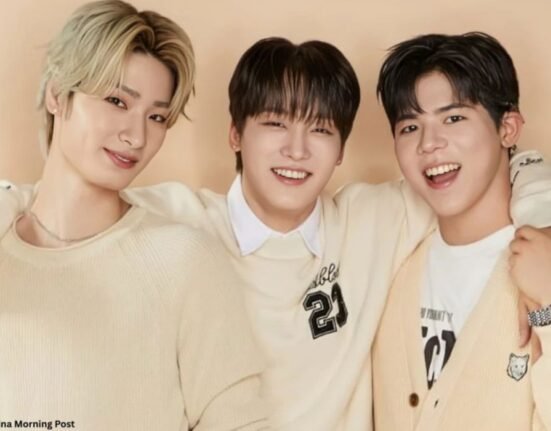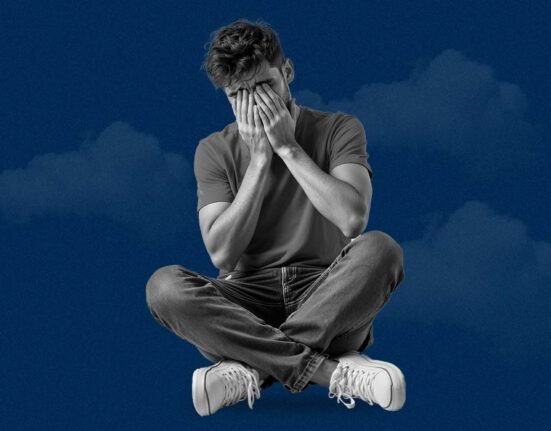Body language can be considered as a secret window to our souls. Since our emotions are “deep-seated” and are intertwined with our behaviours, they tend to be displayed through non-verbal cues i.e. body language. Most of our emotions are expressed through body language, some of these expressions are innate and universal, whereas others are learnt and vary with culture. As per the Mehrabian model of communication, only 7% of our communication is verbal, while the rest 93% is through non-verbal cues.
This ability comes in handy for the following situations: • Raising a child • Understanding your mate’s true feelings • Detecting lies or deception • Spotting insecurity • Emergency situations and pretty much any situation we face in our day to day life.
When we communicate, we mainly focus on the other person’s face; the face can give a lot of information non-verbally. e.g. – a person has drawn his lips inwards towards the mouth, this can indicate the person is hiding something and not speaking the 100% truth. Or that they are hesitating in opening up completely to you. Lip swallowing is basically physically stopping oneself from speaking openly.
At the same time, if a person keeps biting their lips, it is indicative of anxiety and shows that the person is really nervous or uncomfortable in the given situation. This is like a defence mechanism, the person bites his/her lips to distract themselves from the nervousness they’re experiencing.
If we were to talk about the nose, that too gives a lot of information. When someone is deep in thought, they tend to wiggle their nose, playing with it, on the other hand, frustrated persons may tend to pinch their nose slightly.
When a person is in the fight or flight mode and is experiencing an adrenaline rush, their nostrils tend to flare up, this can be indicative of extreme anger. For example, they might be getting really angry during an argument might be considering expressing their anger more physically.
But these cues are still fathomable, the forehead and eyebrows too give out a lot of information which an “untrained eye” might miss. For example, when you are telling an amazing story which seems astonishing and unbelievable, the person listening might wrinkle their forehead along with raised eyebrows. This shows that they find your story astonishing and surprising, and want to know more. Whereas a lowered eyebrow is indicative of a range emotions like confusion, frustration, disrespect. e.g. in a debate, a person makes some untasteful comments which leads to lowered brows from the rest, it could also be accompanied by backwards slanting heads which also shows contempt.
Have you noticed your eyebrows when you meet someone you know? Quick up and down motion of the eyebrows indicate recognition. Such as, when you run into your school time friend during an out of town trip, it would trigger a quick up and down motion of the eyebrows.
Ever heard the phrase that “eyes are the mirror of the soul”? Eyes are said to reflect everything that’s going inside our soul. And indeed, eyes give a lot of information while attempting to read people.
Eyes are even used to Evaluate Neurological challenges in children by measuring how long they’re able to maintain eye contact during a conversation. When we do something pleasurable, something or someone we like, our pupils dilate and expand. The direction of our eyes also speaks volumes as to the true intentions of a person.
Right glance is used when we’re trying to remember something such as a name, face, etc. Left glance on the other hand is used to remember physical features, like shape, colour, texture, etc. Downwards right glance controls our imagination. When someone is speaking something they’re imagining or when a person is lying (speaking something which didn’t happen, they made it up), they usually look down towards the right. Downwards left glace is indicative of our inner communication.
Maintaining eye contact during a conversation is considered to signify dominance and confidence and not being to maintain eye contact is considered to be a sign of nervousness and/or submission, though this is culture specific. For example, if a person looks away, it may signify low confidence, it could also be a result of social anxiety.
On the other hand, if a person is looking downwards, it may indicate submission and even shame. For example, if a child is being scolded for not doing their homework, they tend to look down, to show that they’re ashamed of their behaviour.
Upward glare is indicative of naughtiness. It can also signify boredom and disinterest in the work at hand. It can even indicate uncertainty, for example, in movies or TV, when, in an exam, the person isn’t sure of the answer, they are shown to be looking upward.
If you dislike a person and that person enter the room you’re in, you may tend to look at them sideways. This sideways glance is indicative of internal irritation, such as what you might feel when you run into someone you dislike. This kind of sideways glance may also indicate repulsion.
When a person squints their eyes, it usually signifies confusion and/or disbelief. For example, if you’re telling an amazing unbelievable story, the person listening might squint their eyes, to signify that they want more information and find the story unbelievable.
When a person blinks rapidly, usually accompanied by sweat and/or trembling, they may be experiencing a lot of stress. On the other hand, it can also indicate arrogance. For example, a boss is talking to his employee, while the employee is speaking, the boss keeps blinking rapidly. This can signify dismissal, it can signify that they would rather be somewhere else doing something else rather than listening to this employee.
On the other hand, a direct gaze at a person which might be accompanied by a lowered eyelid and head can indicate attraction. It can signify the “come hither” look specially among partners.
Ever had that moment where you misread or altogether missed the signals your partner is sending while on a date? As it turns out, our body language is a storehouse of information, only, if we know how to read it.
When you’re on a date or just having a conversation with someone, leaning forward towards your partner indicates interest and attraction. For example, when you’re on a dinner date, your date might lean in towards you with his/her entire body facing you, this shows they’re interested in you. Your legs leaning in towards your date/love interest is indicative that the person is sexually attracted and desires sexual intercourse.
On the contrary, when someone is sitting or standing with their backs hunched and shoulders pointing inwards, they might be sad or anxious. In general when our body curls inwards, it is indicative of fear and subconsciously curling inwards is a subconscious protective gesture.
For example, chest pumped outwards in both men and women is a means of flirtation but at the same time, if the chest is curled inwards it is a protective gesture. This signifies insecurities, but depending on the individual, it can also signify friendliness, submissive gesture and even respect.
On the other hand, if the person is standing upright, with the back, neck and shoulders upright, it indicates confidence. But looming shoulders are a sign of intimidation. This is a sign that the person is trying to appear to be confident but inside, they’re insecure about something.
For example, during a job interview, a person standing upright might get selected compared to a person with their chest inwards or looming shoulders, because the interviewer sees the confidence in them and feel they can handle stressful work environment better.
As we are aware that hips signify sexual desires. When pushed outward or swayed, they show a desire for sexual intercourse. When a person’s hips point at/face a particular person, they signify sexual attraction towards that person.
And this part of the article might greatly surprise you, but the feet are one of the most important parts when reading people. This is because people consciously change their posture, the facial expressions, but they are seldom aware of what their feet and legs are doing. We also don’t pay attention to the lower body of the person with whom we’re conversing, since our line of sight is at the abdominal level and above, but if we begin to notice the legs and feet as well, we can decode a lot of information.
When someone is sitting with crossed legs, it signifies defensiveness and/or disapproval. For example if, in a debate, while someone is speaking, the other person crosses their legs, it’s them subconsciously showing their disapproval.
This defensiveness is even more heightened when the person places his/her hand on top of their crossed legs. This might even be seen as a challenging and taunting posture. On the other hand, if a person crosses his/her ankles or knees, it can be seen as a sign of fear or nervousness and/or anxiety. This posture is also a subconscious way of controlling ourselves and our actions during adrenaline rush in fight or flight mode.
Also, the direction in which our feet are pointing, shows the direction of our interest and the direction we want to go. On the contrary, if one leg has stepped back, this could indicate that the person is uncomfortable in the present situation and wants to get out of there.
Have you ever come across someone whose legs keep bouncing? Bouncing legs can either mean boredom- the person is bored; or that the person is nervous. For example, during an interview, the interviewee keeps bouncing his/her leg, this shows that they’re nervous about the interview. Also, if a person keeps tapping their legs or shaking their leg, this can be seen as a sign or restlessness or that the person is getting frustrated.
Same as the hip region, the thighs too are responsible for sending out sexual or suggestive messages. Women are instructed to sir with their thighs closed as it’s more “feminine”. This can be seen as attractive by men, also, since the notion is for women to sit this way, women who don’t follow this, it can indicate opposition to societal norms or “old school” way of thinking. It can be seen as a sign of rebellion. Sitting with crossed thighs with one on top of another can also be seen as a flirtatious sign. Men who sit with open legs, are seen as more dominant: “Alpha male” mentality. Just like tapping the feet or Shaking legs, even pacing is seen as a sign of nervousness and is a subconscious way of us controlling ourselves in the fight or flight mode.
Just as shy or unsure individuals tend to shuffle their feet, arrogant or haughty individuals usually keep their feet totally still as they’re completely aware of their body and body movements. It’s also interesting to note that when we find something extremely funny, our feet come slightly off the ground while laughing.
If while laughing, a woman mimics the feet movement of a man while laughing, it indicates that the woman is comfortable enough with the man and subconsciously indicates attraction. The same is true for men in the case head tilting (rather than feet movement).
Our arms and hands too give important clues while reading people. When a person extends their arms and curves towards another person, this is indicative of hug. It can be seen to indicate protection and/or safety. On the contrary, when arms are raised, it indicates that the person is overwhelmed and/or frustrated.
Do you remember the last time you were standing with your arms crossed? What were you feeling at that time? Crossed arms usually indicate, shyness, fear, anxiety and/or disbelief. However, when someone crosses their arms tightly, and the hands are balled into fists or nestled in armpits, this can signify anger and combat. In anger, this is a subconscious way in which the person is physically stopping themselves from doing anything they might regret.
Some people might fiddle with their fingers, or fiddle with their hands behind their back, this is indicative of anxiety, lack of confidence. For example a person who is nervous while giving a presentation might fiddle with their fingers behind their backs.
In crowded places, such as trains, buses, fairs, etc. Or even in uncomfortable situations, the elbows facing outwards, means the person wants space. It could signify that this person wants others to give them space without having to verbally specify their need for space.
When the hand is placed upon the knee, usually accompanied by leaning towards the opposite person, this signifies submission. On the contrary, when a person holds up their hand with the palm facing the other person, this is indicative of disapproval or dismissal. When the hands are touching parts of the face, this indicates, boredom, brainstorming. On the other hand, when the palms are holding the head up, it usually means the person is finding the given situation very boring and is having to make an effort to keep awake.
When, in a particular situation, a person’s hands start shaking excessively, it means the person is experiencing high stress. The person becomes so nervous that their hands start shaking uncontrollably. Hands may also shake when a person is extremely angry or when a person is lying and their lie has been caught.
In conclusion, we can make changes in our lives, in our relations, make better decisions, etc. If we can read other’s body language like we read a book, it would make drastic changes and improvements in our lives.












Leave feedback about this